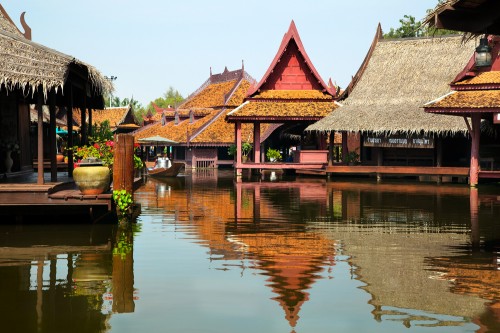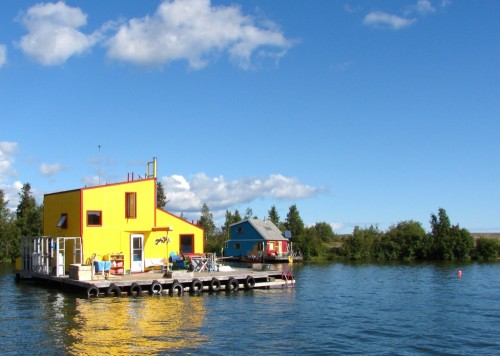 Engineers and architects have been facing the question for years. “When we were designing the Tate Modern, there was a moment when someone said, ‘What will you do when the water is a metre or two higher?’” remembers Stuart Smith, a director at global engineering firm Arup. “As an individual building, there’s not much you can do — you have to rely on sea defenses and civil engineering.”
Engineers and architects have been facing the question for years. “When we were designing the Tate Modern, there was a moment when someone said, ‘What will you do when the water is a metre or two higher?’” remembers Stuart Smith, a director at global engineering firm Arup. “As an individual building, there’s not much you can do — you have to rely on sea defenses and civil engineering.”
Sea level rise is just one of the reasons posited for a future where cities extend into the sea on floating platforms, or even become independently seaworthy. In a story I wrote for the Guardian last week, I explored some of the sci-fi visions and futuristic schemes going to create floating cities. A wise commenter pointed out that real floating cities wouldn’t look like the slick artists’ renderings in the slide show. They’d be rusted out and encrusted with seagull crap.
Floating market in historical park, Ancient City, Bankok
The truth is, though, these communities exist in microcosm all over the place – with varying degrees of grottiness – and one of them is in my own back yard. Yellowknife, in Canada’s Northwest Territories, is home to the last remaining self-regulating floating neighbourhood in the country.
The 45 houses range from one-room shacks to a thousand-square-foot Bed and Breakfast. In winter, residents drive across the ice to their houses, and in summer they use canoes. With no property taxes, residents still have all the comforts of urban access, but it is off-the-grid living.
Wade Carpenter rented a floating home for three years before making the investment to build his own in 2007. After renovating an old hunting shack and mounting it on plastic molded floatation, he installed a kilowatt-worth of solar panels and a composting toilet. Carpenter’s solar-powered electric auger drills through the ice to pump a hundred gallons of lake water into his tanks. The supply lasts roughly a month, and grey water is hauled out in buckets to a disposal site on land. Heating through the sub-Arctic winter is provided by a wood stove with propane backup.
Yellowknife floating home
“It’s not easy living. A lot of people leave because of injuries,” says Carpenter. “When you have to cut wood in minus 40 or you’ll freeze, and the propane guys won’t drive out on the ice, it’s not for everyone.”
Insurance – and the ability to mortgage – is out of everyone’s price range, so residents take their safety and building standards into their own hands. During spring breakup on “the big lake”, exposed homes have to be towed to the shelter of an island to avoid damage from heavy ice drifts. In 2008 a big storm dragged a couple of the houses thirty or forty feet on their anchor lines, but there’s never been a major mishap.
Carpenter has traveled to many of the floating communities around the world, like in the Mekong Delta, where the floating population is so dense that residents simply walk from boat to boat. “With that kind of density you would need some kind of pumping service to keep the place clean,” he says. “We manage because everyone puts a lot of effort into not polluting. At worst, every once in a while something blows off your deck and you have to go searching in the water to fish it out.”
“We have a community skating rink, and when I step out the door I often get invited to breakfast at the neighbours, even though we’re spaced quite far apart.” It’s a tight-knit community with its own norms and disputes. One neighbourhood spat resulted in mooring lines mysteriously severed under cover of darkness. For those who can hack it, though, the value for money is unbeatable. Nowhere else in town could you find lake-front property for less than $100,000.
Images: Shutterstock

